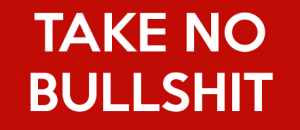We’re so familiar with some of the stories we tell ourselves about the way the world works that we can become oblivious to the fact that we’re using them, especially when they are so prevalent in stories other people are also telling us about How Things Are.
It’s like being half asleep, taking things for granted, so it can be surprising to wake up and realize we’ve been leading ourselves astray and are now dramatically off-course — especially when we think we’ve been doing what we’re ‘supposed to do’.
So how do we get to where we want to go?
Our minds run on metaphors: words and stories, big and small. And good communicators, including therapists, know that a good word at a good time can be the difference that makes the difference.
…though I’m not sure that my exclamation of “Don’t kill your fucking dragons!” during a training course recently quite meets that standard, but it’s what I felt and it’s what I meant. (I meant a lot more but I do have some manners). I’ll explain why.
Humans love narrative, we love ‘if — then’, it gives us structure, familiarity and a sense that we might be able to predict outcomes, which makes us feel safer and more in control. Like we can get where we want to go. But it can result in things that for a split second make me want to delete the internet. Like the *endless* bait-y posts of “Do these 17 aaaaamazing things to immediately transform EVERY area of your life, №13 will SHOCK you!”
Please…
Yes of course there are things we can do to improve the hows and whys of living our lives, but problems arise when things are over-simplified, over-sold, and over-looked.
And that happens with the blunt use of this go-to metaphor:
The Hero’s Journey
We have our protagonist. Our would-be-hero has a problem: they are threatened by an Other. This Other is ‘out there’. Our struggler must leave home, be alone, hunt, find, fight, win by seizing the sword and killing the dragon, and return, with a key character flaw transformed, and with the elixir, to achieve the valued identity of The Hero, elevated above the masses.
This template is drawn from Joseph Campbell’s The Hero With A Thousand Faces and is presented as a universal: the monomyth. Anyone else hear alarm bells? We know that any totalizing statement is an invitation to explore the beliefs it signposts and the experiences it silences. So excuse me while I choke on my archetypes. The hero with a thousand faces: all of them a certain shade of male masculinity following a combat narrative. It is a product of its circumstances and so whilst useful in certain situations, its application needs to be nuanced.
Now, I love a hero. Always wanted to be one. And a lone wolf, a ronin, at that. I went to my first kickboxing competition solo. No team. No corner. Just me. Because that’s what a hero does, right? They do it alone. If you have help, it doesn’t count. Right… Would I advise my students or clients to do this? Hmm…
Blunt use of this metaphor frames ‘the problem’ as an outside enemy, the task as difficult, the person needing to separate from rather than connect with their support structures, suffer alone in the unknown, engage the ‘fight’ survival response, kill something, and see the only success as victory-by-conquest: the only way you get to be a hero — to be of this value — is to win.
When presented like that, the issues become clearer, I hope. We know that perceiving a threat produces a fear-based stress response, which usually keeps us in a state of protection, risk averse, and playing small. So let me tell you another story that’s going to frame the rest of this article:
I have a problem
I experience dyslexia. Language being unstable is a staple of my experience. And if it changes before, and/or behind, my eyes, of its own accord then I shall chime in with my own improvisations and suggestions. Because I find that words do gesture to each other. Like a jest, playfully. And through play and humour we’re more able to receive and explore what might be true for us.
We get to it indirectly, because comedy and wordplay reply on misdirection (I meant to say ‘rely on misdirection’ but ‘reply’ is better, because it is a dialogue, isn’t it, the call and response?). And as we know, the linguistic banana skin, or a plot device, doesn’t have to be true, jest useful. Which brings me back to the positive use we can make of the hero’s journey.
To see if we can make this metaphor more majestically useful, I’m going to invite two words to help dismantle some pieces of this pedestal: problem, blemish, and their progeny pro-blem-ish. They’ll also find a long-lost sibling, but we’ll get to that later.
Coming to terms
I’m going to make a crude division between problems you want and ones you don’t. The first help you grow, second don’t, necessarily (they’re things you can grow from but wouldn’t invite into your life). This is about the former.
Problem: involves doubt, uncertainty, or difficulty. OK, what else? A scientific-problem is an observation that contradicts an accepted law or theory. Interesting. A proposition in maths or physics stating something to be done. That’s nicely active, potentially collaborative, and inviting an internal locus of control, isn’t it?
Blemish: a fault or flaw in appearance or character, an imperfection. Well, we all have of those, so we’ll have plenty of material to work with in a moment.
OK, let the fun begin.
Years ago a wonderful actor advised me, ‘don’t solve your problems too early’. Gosh, that was a shock to my “I-have-to-be-right,-right-now!” mindset back then! Giving our problems breathing space and staying in uncertainty is an antidote to our minds’ drive to control and predict. If you settle on a solution too soon, you never know what you were just about to find out.

Also, if we define a problem too soon we may we de-fine it: fine details getting lost as we put up barriers as to what it is and isn’t. This matters because we can only be as good as our opponent. A climber can only be as good as the mountain, a fighter only as good as the challenger. Without the Other we cannot find out what we’re capable of. And perhaps by allowing the Other to have its fullest space we can be really lucky and the problems we want to have can grow with us. So when wondering what problem would give us the greatest journey, choose a problem that’s worthy of you.
So we’re not going to kill the dragon…?
If you approach it like an enemy then it will treat you like an enemy. So how about this… we could make friends with it? Tend and befriend it? Ask it about itself? Bring it something it needs. Because what if that Other is another part of you?
In therapy there’s a useful working principle: all behaviours have a positive intention. What this means is that your mind is always trying to do its best for you, and best in this framework is keep you alive, safe, and in the situations that you already know.
For example, you may get nervous when speaking in public. You might start shaking, imagining all the things people are thinking about you, get really aware of the spot on your cheek (that no one else would notice), the slightly wonky front tooth (that you hate but your partner thinks is adorable), or that memory of forgetting your lines in the school play and your classmates laughed at you. Why does the mind do this? To give you every possible motivation to get out of this situation as soon as possible to keep you safe from the possible negative consequences. Yes, running out of a work presentation is going to be professionally embarrassing, but a part of your mind thinks it’s saving you from it.
So we have the part of us that’s wanting to one thing, and the part of us that doesn’t. That part of you that’s causing you difficulties, your dragon, instead of being angry and frustrated with it and berating ourselves, just as an experiment we could see what happens if we thank it, listen to it, and love it.
What would it mean for you to love your dragon, that part of you ‘doing the problem’? Because that part probably thinks it’s not lovable, not good enough, not capable, or worthy enough. What would it mean to love your self into change rather than hate yourself into submission?
Shaming and attacking ourselves just adds fuel to the negative fire. We need another way. To not brace against, but to embrace our dragons, and see what we might achieve together. Indeed, Joseph Campbell argues that the hero discovers and assimilates their opposite, their own unsuspected self. And by doing so resistances (to change, to what you want to achieve) are broken.
And what about another self, our future self, the one you can imagine 6 months from now enjoying the changes you’ve made or feeling disheartened about still being in the same difficulties as now? Etymologically, ‘problem’ comes from Pro meaning forward and Ballein meaning to throw. I love this. You and your problem, playing it forward for your future self.

Throw a stick or ball for a dog (when it’s in the mood….) and it’ll bounce with joy all the way there and back. There we have a journey, a quest, and a return. All joyous. And with the enthusiasm to do it again and again. Not broken, not battered, just gloriously muddy.
Speaking of earthy and gritty: back to blemish. A fault? A faultline appears as a crack in the surface that lets the inside out, releasing energy and forming new surfaces. It’s the meeting and movement of two parts of ourselves and the growth that occurs between them. So our flaws can be our floors. Keeping us grounded, providing a new foundations upon which to stand, being the levels in the multi-storied-buildings of our selves.
Take the judgment out of ‘blemish’ that implies we should be fine, and consider that if something de-fines you then you can stand out. And what makes you stand out can make you out–standing. So rather than extinguish the dragon’s flames, we can use them to distinguish ourselves.
So is the problem really a problem, or…?
Pro-blem-ish: A part of us that’s other than what we might want, drawing attention to what we do want.
Seeing dragons as pro-blem-ish gives grounds to connect with humanity, because growth requires connection and distinguishment. Knowing that is theory, navigating that dynamic tension is a moment by moment practice of wisdom. (Oh dear, have we stumbled upon an elixir?)
So, back to our plot device. We can play with our stories not to de-vice us — to remove our flaws or elevate us above others — but to tool us up with devices to use to grow through them.
You’ve got a problem? Great!
It’s an invitation to collaborate, which jest-ures towards laboratory: to experiment with engaging skillfully. Have a dialogue. Your own call and response.
We can choose to be worthy of our problems, choose problems that are worthy of us, and choose practices of relating that are honouring of all sides.
Oh yeah, the problem I identified as experiencing, dyslexia, has presented me with some of my most enjoyable ideas. So, I leave you with this:
The long lost relative
If a blemish is not something to hide out of (or into) shame, then instead we could use it to embellish — or em-blemish — us. Thus I am delighted to introduce:
em-blem-ish-ment: choosing which problems you want to have, what you decide they mean, and how you’ll grow in relation with them.
I shall now leave you in your own fine and majestic company.
Thanks for reading. If this has been helpful to you then feel free to let me know. And if you found it interesting then please feel free to share it so other people can find and enjoy it too.
(Originally published on Medium in 2017 https://medium.com/@eveparmiter/dont-kill-your-f-cking-dragons-ed1a51ccb4ea)
(Image credit: pexels, Roberto Zuniga)



